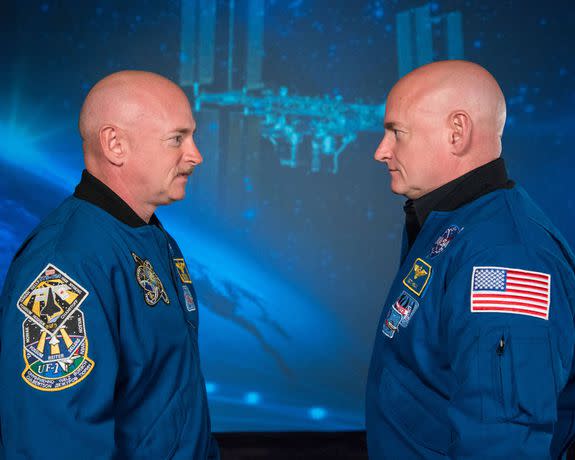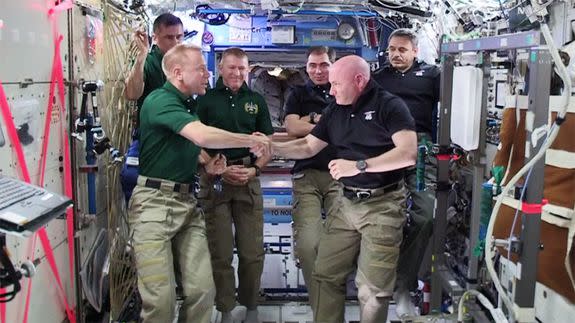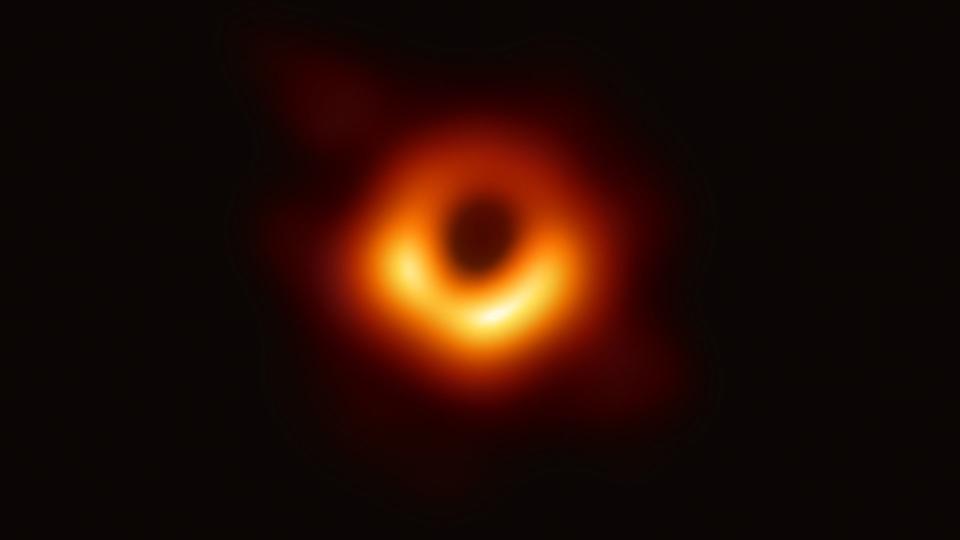Scott Kelly spent a year in space. What happened to his body?

When astronaut Scott Kelly landed in the frigid Kazakhstan plains on March 2, 2016, a team of responders pulled Kelly and two Russian cosmonauts from the charred capsule and carried them to chairs, set out in the crisp morning air. After nearly a year in space, Kelly looked pale but appeared alright, joking about the weather with the crew and media.
Three years later — after scrutinizing Kelly's blood, arteries, genes, eyes, bones, and gut bacteria in the aftermath of the historic venture in space — a team of over 80 scientists has released a sweeping analysis of how Kelly's body changed and what returned to normal after the now-retired 55-year-old astronaut returned to Earth. Dubbed the "NASA Twin Study," the research published Thursday in the journal Science compared Scott Kelly's biological changes to that of his identical twin, Mark Kelly, who spent that year grounded on Earth.
The study is exceptionally detailed ("They measured as many things as they possibly could," said Richard Gronostajski, a geneticist at the State University of New York at Buffalo), but when it's all distilled down, the message about spending a year in space — exposed to microgravity and mildly higher levels of radiation — is relatively clear.
"It’s reassuring to know that when you come back things will largely be the same," Michael Snyder, a study coauthor and director of the Stanford Center for Genomics and Personalized Medicine, said in a call with reporters.
In short, Scott Kelly's body exhibited some changes in space, but most everything returned to normal upon his return, particularly his gene activity.
"In this paper they showed there was no statistically significant difference in genetic modifications they could find between the twin in the space station with the one on the ground," said Gronostajski, the director of the University of New York at Buffalo's Genetics, Genomics, and Bioinformatics graduate program.
"That's good news," added Gronostajski, who had no role in the study.

Image: Nasa
Yet this study comes with a big, big caveat. Besides the reality that only Scott Kelly's body has been evaluated so extensively after a year in space (that's a really small sample size), it's still unknown how the human body will fare during longer duration missions, specifically those to Mars. During the second half of Kelly's stay at the International Space Station, researchers found that some important gene activity — those involved in DNA damage and immune response — become six times more active. Geneticist Christopher Mason, a study coauthor, likened this to electrical switches in your kitchen: During the first six months, just a couple things were turned on. But later on, appliances everywhere were abuzz.
This boost in gene activity did not result in long-term problems for Scott Kelly. But perhaps, during a longer deep space mission, this could lead to ill-effects.
SEE ALSO: What's actually going on in that cryptic black hole photo?
"There may be other things coming down the pipe when we consider three-year missions to Mars," said Michael Bungo, a professor of cardiovascular medicine at the University of Texas Health Science Center. Bungo, who had no role in the twins study, formerly served as chief scientist of the Medical Sciences Division Institute at NASA's Johnson Space Center.
"It's a wonderful lesson in caution to remember that you’re not going to be able to predict changes at two years or three years with changes that you see in one year," Bungo added.
The changes
Biologists and doctors took thousands of measurements from Kelly's body at precise, molecular levels never measured before on such a scale. While aboard the space station, Kelly even sent blood samples back down to Earth, via return capsules. These are some — but not all — of the important takeaways:
91.3 percent of Scott's gene activity returned to normal six months after landing back on Earth. Importantly, his genes never mutated. Rather, they altered their activity in response to the environment, something known as "gene expression."
The flu vaccine worked the same in space.
Interestingly, Kelly's telomeres — the end caps on chromosomes — grew a little longer in space, but then shortened again upon his return. (Shortened telomeres are a biological marker of aging.)
The bacterial make-up in Kelly's gut significantly changed, as a common microbiome population became dramatically more dominant than it was before the year-long spaceflight. This is not necessarily good or bad. (More research needs to be done.)
This study — described by study coauthor and genomics expert Andrew Feinberg as the "dawn of human genetics in space" — is unquestionably valuable. But it comes with a slew of well-known limitations. In short, NASA needs to study more astronauts as they spend varying lengths of time floating in space.
"The bottom line: There's still a ton we don't know," said Stanford's Snyder.

Image: nasa
The intensive scrutiny of Kelly's body revealed a lot, but there's only compelling evidence for one human: Kelly. "It's a singular experiment, but a wonderful singular experiment," said Bungo.
"When you’re doing a study, you do it the way that you can," said Gronostajski, acknowledging that it's challenging to study any astronaut in space, hovering some 250 miles above Earth. "I would have been much happier if — rather than looking at twins— that they did the same studies on 10 astronauts who were in space for 3 months, 6 months, and more," added Gronostajski.
NASA already has plans to send more astronauts into space on longer missions. "We in NASA’s Human Research Program plan to continue this line of investigation for years to come, including aboard the space station during the Integrated One-Year Mission Project, currently under development," Bill Paloski, the director of NASA's Human Research Program, said in an statement.
Going forward, a critical issue NASA must tease out is what changes in astronauts' bodies are due to shifts in gene activity and expression, versus the novelty of living in such a foreign environment. Spending a year on the space station would shock anyone's system.
"It means living in a can for a year," said Bungo. "It means breathing re-circulated air. It means seeing the same people over and over again. It means more or less eating the same diet — you can’t go out for Chinese food."
What's more, scientists may see clear biological changes in space — like the lengthening of Scott Kelly's telomeres — but it's uncertain what that means, if anything. "The biological significance of it is unknown," said Gronostajski.

Image: nasa
Though, decades of research have shown that some astronauts do experience clear physical problems after living in space. Of note, a small minority of astronauts experience changes in the shape of their eyeballs, leading to poor vision following their spaceflight. Astronauts have also experienced an increase in the stiffness of blood vessels, but it's unknown if that's something that could result in heart disease.
"How many astronauts do you need to study to conclude that spaceflight really makes a difference here?" asked Bungo, a cardiovascular specialist. "We're nowhere near that now."
The common, if not trite, refrain — often repeated in science — is ever salient when it comes to human health in space, a weightless, radiated realm: more research is needed.
"Most biologists would say a twin study with just two people is unlikely to have the power to find something too meaningful," said Gronostajski.
WATCH: First image of a black hole is captured by astronomers


